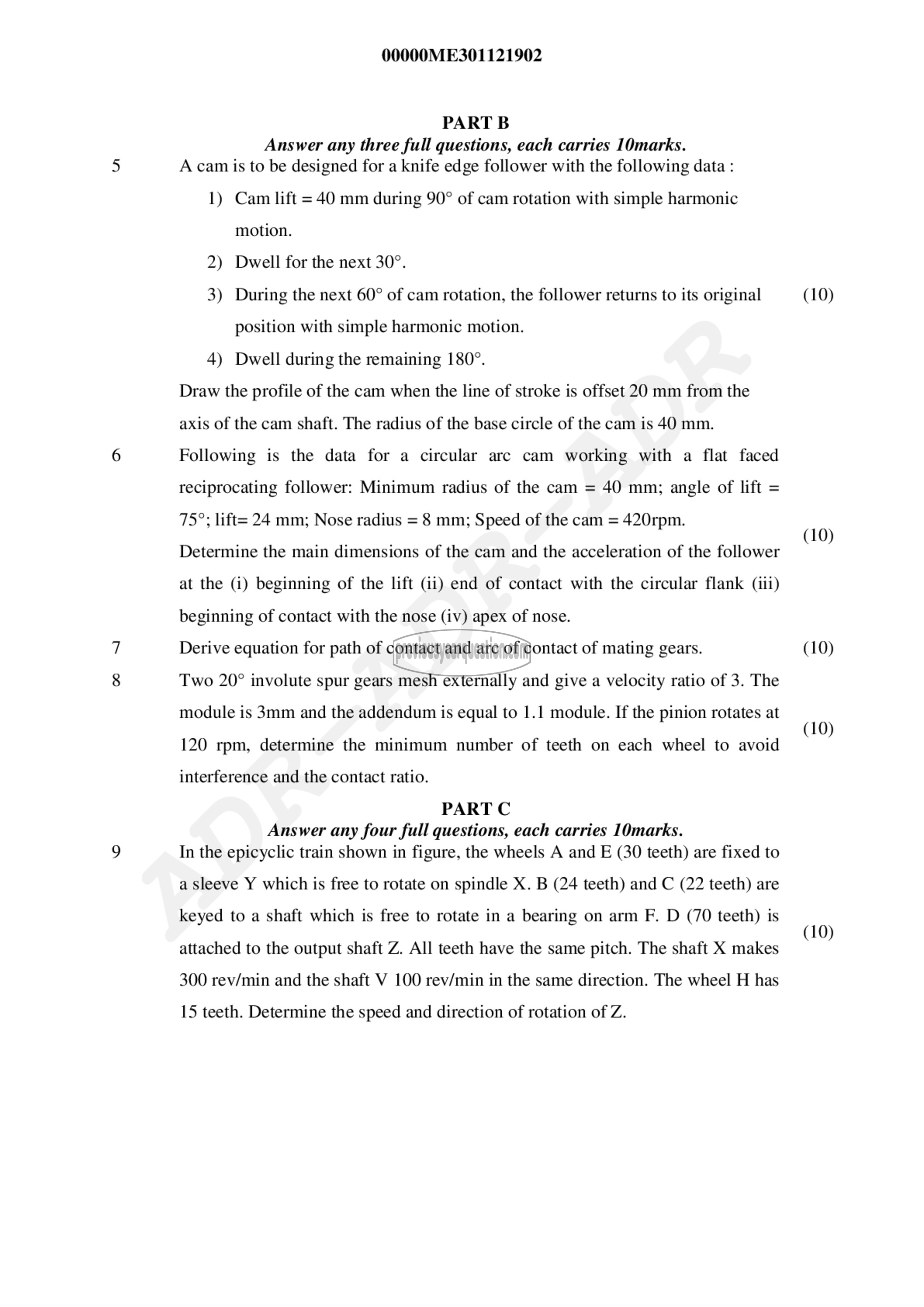APJ ABDUL KALAM TECHNOLOGICAL UNIVERSITY Previous Years Question Paper & Answer
Semester : SEMESTER 5
Subject : Mechanics of Machinery
Year : 2020
Term : SEPTEMBER
Branch : MECHANICAL ENGINEERING
Scheme : 2015 Full Time
Course Code : ME 301
Page:2
00000ME301121902
PART تا
Answer any three full questions, each carries 10marks.
A cam is to be designed for a knife edge follower with the following data :
1) Cam lift = 40 mm during 90° of cam rotation with simple harmonic
motion.
2) Dwell for the next 30°.
3) During the next 60° of cam rotation, the follower returns to its original
position with simple harmonic motion.
4) Dwell during the remaining 180°.
Draw the profile of the cam when the line of stroke is offset 20 mm from the
axis of the cam shaft. The radius of the base circle of the cam is 40 mm.
Following is the data for a circular arc cam working with a flat faced
reciprocating follower: Minimum radius of the cam = 40 mm; angle of lift =
75°; lift= 24 mm; Nose radius = 8 mm; Speed of the cam = 420rpm.
Determine the main dimensions of the cam and the acceleration of the follower
at the (i) beginning of the lift (ii) end of contact with the circular flank (iii)
beginning of contact with the nose (iv) apex of nose.
Derive equation for path of contact and arc of contact of mating gears.
Two 20° involute spur gears mesh externally and give a velocity ratio of 3. The
module is 3mm and the addendum is equal to 1.1 module. If the pinion rotates at
120 rpm, determine the minimum number of teeth on each wheel to avoid
interference and the contact ratio.
PART C
Answer any four full questions, each carries 10marks.
In the epicyclic train shown in figure, the wheels A and E (30 teeth) are fixed to
a sleeve Y which is free to rotate on spindle X. B (24 teeth) and C (22 teeth) are
keyed to a shaft which is free to rotate in a bearing on arm F. D (70 teeth) is
attached to the output shaft Z. All teeth have the same pitch. The shaft X makes
300 rev/min and the shaft V 100 rev/min in the same direction. The wheel H has
15 teeth. Determine the speed and direction of rotation of Z.
(10)
(10)
(10)
(10)
(10)
